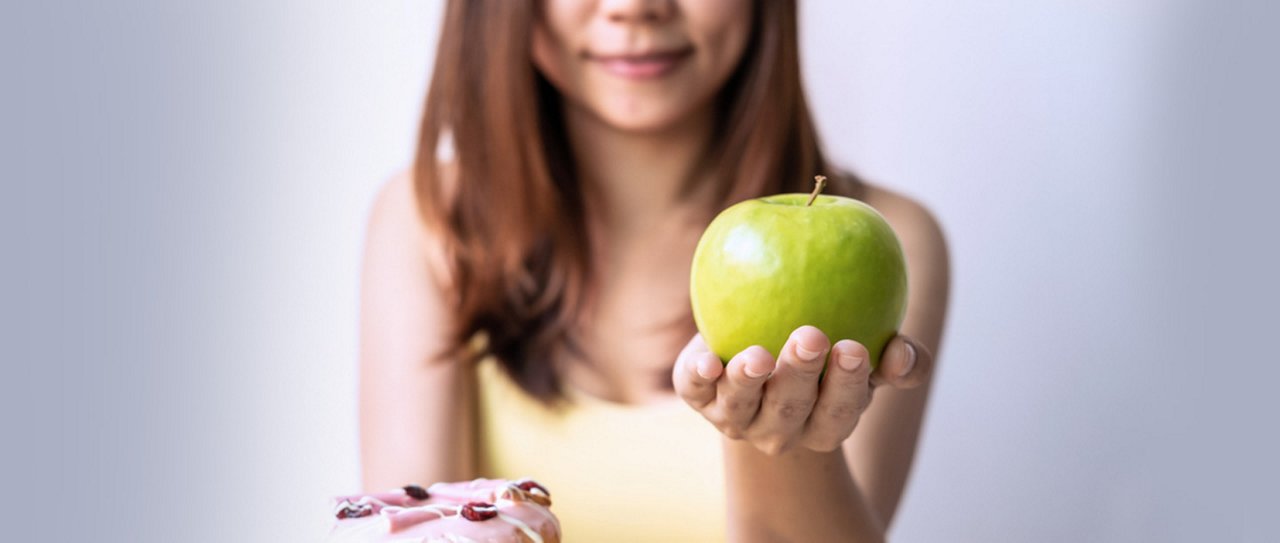How to quit sugar without going crazy

Recently I decided to try an experiment and give up sugar for a week to see what happens.
I liked the results so much that I kept going with it a while longer. After two weeks, I’d lost 5 pounds just by going sugar-free! My tummy shrunk down, plus I felt better – more alert and less sluggish. This happened even though I wasn’t eating a lot of sugar before.
Instead of one of my usual post-meal treats, I ate dates, raisins, a banana or an apple, in moderation. I made no changes other than that. The result was amazing. My body said thank you.
It’s no wonder that I felt better. Consuming sugar has a major impact on your blood glucose level. It is also known to be inflammatory to our bodies, as well as being highly addictive.
Sugar can even increase anxiety symptoms. Plus, a study published in JAMA Internal Medicine found that eating too much added sugar increases the risk of dying with heart disease – even if you are not overweight. Yikes.
The magic of a 5-day challenge
I had already cut back in many respects: I never drank sugary beverages, was already using stevia in tea, and I was pretty good about monitoring portion sizes of goodies.
But I still had issues with cravings, and when I have something with sugar it just makes me want more. So I decided to put myself on a 5-day challenge to give up added sugars.
After a meal, when I wanted something sweet, I had a piece of fruit instead. For me, that was a radical change. I never used to eat fruit at all.
To my surprise, instead of feeling deprived, I found fruit satisfying and it didn’t cause me to crave more sweets. It helped retrain my appetite and brain. At the end of the week, my cravings were gone, and I was satisfied after a snack or meal instead of wanting more. I liked the results so much that I decided to keep going for a few more weeks. And when I did go back to eating something with sugar, it tasted so overly sweet that I didn’t even want much of it.
I’m not saying that I never ever have sugar, but taking that time off really helped my body “reset” and it kicked those cravings.
I’m a big fan of doing a 5-day self-challenge when trying something new, especially if it involves eliminating a habit or establishing a new one. The time limit makes it infinitely easier to stick to, knowing that you just have to make it to Saturday and then you’ll decide at that point if you’re continuing and how you’ll go forward. It keeps you feeling more in control.
I found success doing it Monday through Friday, but there’s no right or wrong; it’s whatever works best for you. Some people stay sugar-free during the week, then designate a weekend day to have a sugary treat.
Tips and tricks to make it work
Get rid of all sugary treats – Don’t keep them in the house. Just don’t buy them at all.
Stock up on healthy snacks
Have whole fruit instead of sweets – As I mentioned, fruit helped me kick added sugars and my reliance on chocolate. Yes, fruit contains natural sugar, and certain varieties should be enjoyed in moderation. But whole fruits are full of antioxidants and other nutrients and are high in fiber – all things our bodies need.
Don’t drink your sugar – Regular sodas, lattes, and other coffee drinks, fruit juices, sports drinks, and even many so-called “healthy” beverages (hello, Vitaminwater) all contain a considerable amount of added sugars.
Avoid or cut back on processed food – Make your own fruit water, juices, baked goods, snacks, and meals. Research new recipes to try.
Use a sugar substitute – I prefer natural Stevia to artificial sweeteners. Also, cinnamon can be used to mimic sweetener. To replace sugar, my husband started adding 1/4 tsp. cinnamon to a cup of coffee (don’t brew the cinnamon in the coffee).
Read labels – There is hidden sugar galore in many processed products, and sugar is called by many different names. To name a few: Anything ending in “-ose” (dextrose, lactose, maltose, fructose, glucose, sucrose), molasses, organic cane sugar, fruit juice concentrate, malt sugar, corn syrup, and honey.
Say “No, thanks” if you’re offered food that you’re trying to avoid, and don’t feel guilty about that.
Switch to no-sugar-added condiments, peanut butter, jellies, and sauces.
Candy and other processed sweets that claim to be sugar-free aren’t a free ride. They are sweetened with sugar alcohols or artificial sweeteners and are often much sweeter than table sugar, which can cause issues.
Calories count, and this goes for healthy foods, too. Be careful that you aren’t eating more calories than before. Sugar-free doesn’t mean calorie-free, so it can still cause weight gain.
Keep a food journal or track your food and calories in an app.
Find a better way to manage stress, instead of turning to treats. Exercise is an excellent way to help with this.
Gradually cut back, if going cold-turkey seems too daunting – For example, add half of your usual amount of sugar to your coffee. Use half the usual amount in recipes. Or, cut back on your portion sizes. If you have an addiction to sugar, cutting back may be the least painful way to get started. However, this will only work if you’re diligent in following through.
Give it a try
If there’s a food that you suspect is causing you some issues, try taking some time away from it and see how you feel. I find it easier to do this by starting on a Monday and saying, “From now through Friday I’m not having any added sugar.” This is much more doable than saying, “No more sugar for me, ever!”
I’ve found that if I do this as a time-limited experiment, it’s so much easier to stick with changes. In fact, several years ago I did it this way with potato chips, one of my biggest addictions at the time – and after the five days, I didn’t go back to them!
I never said I won’t have sugar again, and that wasn’t my intention. That’s unrealistic, and besides, I don’t believe in depriving myself. But I find that sometimes it really helps to do a “reset” on my body and step away from a particular food or habit for a while. And then, when I do go back to it, I can do so in a smaller amount and with better control.
Try this technique for yourself and see how it works for you.
Browse related articles
Blue Cross and Blue Shield of North Carolina does not discriminate on the basis of race, color, national origin, sex, age or disability in its health programs and activities. Learn more about our non-discrimination policy and no-cost services available to you.
Information in other languages: Español 中文 Tiếng Việt 한국어 Français العَرَبِيَّة Hmoob ру́сский Tagalog ગુજરાતી ភាសាខ្មែរ Deutsch हिन्दी ລາວ 日本語
© 2024 Blue Cross and Blue Shield of North Carolina. ®, SM Marks of the Blue Cross and Blue Shield Association, an association of independent Blue Cross and Blue Shield plans. All other marks and names are property of their respective owners. Blue Cross and Blue Shield of North Carolina is an independent licensee of the Blue Cross and Blue Shield Association.





